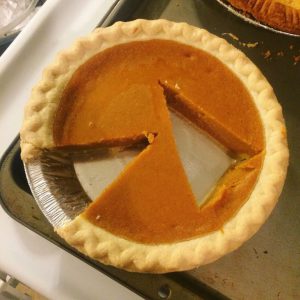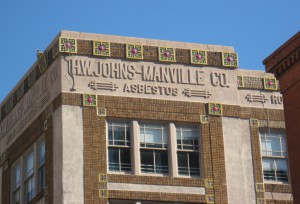Not Fair in Pennsylvania: Application of The Pennsylvania Fair Share Act to Strict Liability Cases Reviewed by State Supreme Court
By James Scadden, Oakland and Eric Rosenberg, Philadelphia on March 11, 2019

In Pennsylvania, the proper method by which shares of liability are allocated to asbestos defendants (and strict liability defendants more generally) has been unclear for some time. The Supreme Court of Pennsylvania heard argument on March 6, 2019 in a case that should clarify matters and provide some certainty regarding the Pennsylvania Fair Share Act.
Background
The Pennsylvania legislature passed the Fair Share Act in 2011, eliminating joint and several liability from most tort cases. See 42 Pa. C.S. §7102. Under the Fair Share Act, each defendant is only liable for its apportioned amount of lability:
Where recovery is allowed against more than one person, including actions for strict liability, and where liability is attributed to more than one defendant, each defendant shall be liable for that proportion of the total dollar amount awarded as damages in the ratio of the amount of that defendant’s liability to the amount of liability attributed to all defendants and other persons to whom liability is apportioned under subsection (a.2).
42 Pa. C.S. §7102(a.1). From a practical standpoint, this provision of the Fair Share Act makes “pro rata” or “apportioned” allocation the default mechanism for allocating liability amongst tortfeasors in Pennsylvania.
Subsection (a.2) provides that “a defendant’s liability shall be several and not joint, and the court shall enter a separate and several judgment in favor of the plaintiff and against each defendant for the apportioned amount of that defendant’s liability.” 42 Pa. C.S. §7102(a.2). This provision eliminates joint and several liability and makes all tortfeasors severally liable to the injured party except in a few defined circumstances. For instance, where a defendant is found more than 60% liable to plaintiff, that defendant is jointly and severally liable. See 42 Pa. C.S. §7102(a.1)(3).
Although the Fair Share Act specifically applies to “actions for strict liability,” trial courts have inconsistently applied pro rata allocation in asbestos strict liability litigation. Many courts have relied upon a prior version of the Fair Share Act which apportioned fault amongst strictly liable defendants on a per capita basis whereby each defendant is equally responsible for a portion of the verdict (e.g. five defendants would each be 20% liable).
Roverano
The Superior Court held in December 2017 that the Fair Share Act applies to both negligence and strict liability actions. See Roverano v. John Crane, Inc., 177 A.3d 892 (Pa. Super. 2017). In Roverano, a Philadelphia jury awarded $6.4 million to a former utility worker and his wife in an asbestos (lung cancer) lawsuit. The trial court ruled that the Fair Share Act did not apply and apportioned the judgment equally among the eight defendants determined to be tortfeasors. The two defendants left at trial appealed, arguing (1) that the Fair Share Act applies to strict liability matters and (2) that the jury may consider evidence of settlements with bankrupt entities in connection with apportionment of liability.
The Superior Court agreed, finding that “liability in strict liability cases must be allocated in the same way as in other tort cases, and not on a per capita basis” and that “settlements with bankrupt entities [may be] included in the calculation of allocated liability” under the Fair Share Act provided that defendants at trial “submit evidence to establish that the non-parties were joint tortfeasors.” Roverano, 177 A.3d at 909.
The Pennsylvania Supreme Court granted a petition for appeal in Roverano to settle these issues of “first impression” to determine the proper method of allocation in strict liability cases. The Roverano case was argued before the Supreme Court on March 6, 2018.
The justices were generally skeptical of proportional allocation of fault in asbestos litigation, finding that such an approach would lend itself to “junk science” over how fault should be apportioned between defendants. Further, the justices questioned how it would be possible for a jury to determine proportional fault in a “non-arbitrary way” in asbestos cases. Counsel for the defense argued that the Fair Share Act is specifically focused on apportionment of damages, not liability, such that the cause of action is not altered. Plaintiffs’ counsel asserted that it would be impossible for the jury to apportion fault in this manner where the medical community has not been able to do so in the asbestos context. Plaintiffs also argued that bankrupt entities should not be allowed on the verdict sheet because it would violate federal law that bars bankrupt entities from defending lawsuits.
Roverano presents an opportunity for the Supreme Court to set the record straight once and for all as to whether the Fair Share Act applies to strict liability litigation. It appears based on oral argument, however, that the Supreme Court is focused more narrowly on whether the Fair Share Act should apply in asbestos cases, entertaining argument as to whether it is medically and scientifically possible to do so at all. Some commentators were anticipating that the Supreme Court might – in the interest of predictability in products litigation – take a broader approach and establish a framework as to how liability should be apportioned generally in strict liability cases. A decision is expected in a few months.

 When a defendant dies before suit is filed, a California plaintiff can sue by naming the estate as defendant but serving the decedent’s insurer. The plaintiff cannot recover damages from the insurer beyond the policy limits. (Cal. Prob. Code, §§ 550-555.)
When a defendant dies before suit is filed, a California plaintiff can sue by naming the estate as defendant but serving the decedent’s insurer. The plaintiff cannot recover damages from the insurer beyond the policy limits. (Cal. Prob. Code, §§ 550-555.) In the recent decision
In the recent decision  As we recently
As we recently  California’s Proposition 51 limits a defendant’s share of liability for non-economic damages (like pain and suffering) to the “defendant’s percentage of fault” for the injury, effectively allocating to other tortfeasors liability for the rest of the noneconomic damages. A recent decision,
California’s Proposition 51 limits a defendant’s share of liability for non-economic damages (like pain and suffering) to the “defendant’s percentage of fault” for the injury, effectively allocating to other tortfeasors liability for the rest of the noneconomic damages. A recent decision,  Until now, there has been a split of appellate authority in New York concerning what a prospective purchaser must show in seeking damages for a seller’s repudiation of a contract for the sale of real property. It is the general rule that a prospective purchaser seeking specific performance of a real estate contract must demonstrate that it is “ready, willing and able to close.” However, there has been a split of authority concerning whether the purchaser must demonstrate that it is “ready, willing and able” to close in seeking damages for seller’s anticipatory breach of contract.
Until now, there has been a split of appellate authority in New York concerning what a prospective purchaser must show in seeking damages for a seller’s repudiation of a contract for the sale of real property. It is the general rule that a prospective purchaser seeking specific performance of a real estate contract must demonstrate that it is “ready, willing and able to close.” However, there has been a split of authority concerning whether the purchaser must demonstrate that it is “ready, willing and able” to close in seeking damages for seller’s anticipatory breach of contract.